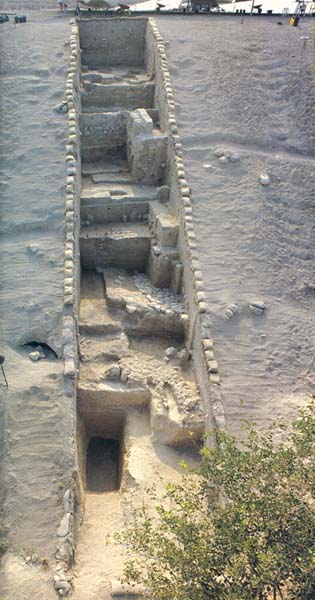Image Details

John Camp
The first step. Eager to obtain a rough sketch of the structure and age of the strata of Tel Rehov, excavators cut this trench into the slope of the lower city during their first season in the field. The soil at the lowest (and earliest) level contained yellow travertine silt—evidence that the waters of a small lake had once lapped the foot of the mound, in the 14th and 13th centuries B.C.E. Excavators concluded that occupation layers discovered progressively higher in the 15-foot-wide trench (in Area D) belonged to a series of Canaanite cities dating from the 13th to the 11th century B.C.E. The cobblestone floor about halfway up the trench comes from a 13th-century Canaanite building. The mudbrick wall near the top belongs to a building from the 11th century B.C.E.
